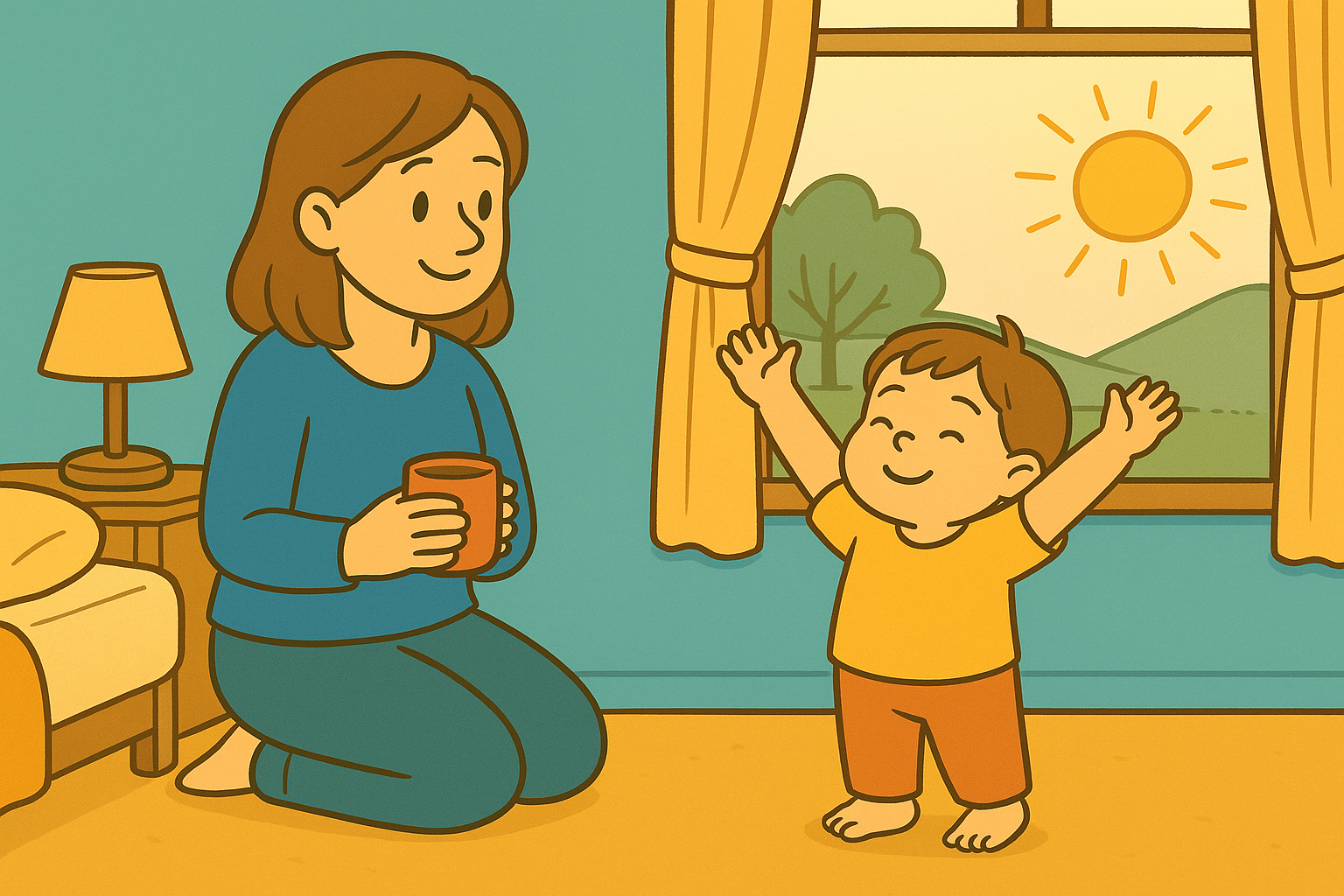Building Mindful Morning Habits With Kids
Building Mindful Morning Habits With Kids
Why Mornings Are the Best Time to Practice Mindfulness
Mornings often rush forward before anyone has time to fully “arrive” in the day. For children, this transition from sleep to wakefulness can be jarring. But when mornings begin gently — with presence, intention, and connection — children enter the day feeling calm, grounded, and ready to engage. Mindfulness in the morning isn’t about slowing everything down — it’s about starting with awareness instead of automatic motion.
What Mindfulness Looks Like for Young Children
Children don’t need formal meditation to be mindful. Mindfulness simply means:
Noticing what’s happening inside the body
Noticing what’s happening around them
Moving with intention instead of rush
Feeling present instead of lost in uncertainty
Just like in The Power of Shared Family Reflections Before Bed, mindfulness is less about explanation — and more about experience.
Why Mindful Mornings Help the Whole Family
A mindful start to the day helps with:
Smoother transitions
Greater emotional control
Increased cooperation
Stronger connection with caregivers
Lower anxiety throughout the day
When mornings begin with steadiness, children carry that steadiness into school, play, and problem-solving — often without even realizing it.
Small Morning Habits That Build Presence
Mindfulness doesn’t need to be long or complex. Try one or two of these:
Open the blinds slowly while noticing the light
Touch something warm (tea, blanket, pet)
Listen to one soothing song before rushing
Stretch or wiggle the body with intention
Whisper: “Good morning, day.”
Greet each other with eye contact
These simple cues help children wake with awareness rather than alarm.
Using Breath to Support Morning Transitions
Breath is one of the most accessible tools for nervous system regulation. A few ideas:
“Blow the morning breeze”: slow exhale breath
Smell a flower, blow a candle
Put a hand on the belly and feel it rise
Use a pinwheel or tissue to practice airflow
This connects well with ideas from Teaching Kids to Reset After Emotional Moments, where breath helped children come back to calm during overwhelm.
Engaging the Five Senses to Start the Day
Mindfulness for young children often begins with sensory awareness. Try prompts like:
What do you hear right now?
What color do you see first today?
What does the morning air smell like?
Is your body moving slow or fast?
Do you feel warm or cool?
Naming sensory details helps children arrive emotionally — not just physically — in their morning routine.
Mindful Movement as Part of the Routine
Instead of jumping right into tasks, try incorporating gentle movement:
Stretching arms toward the sky
Rocking side to side
Walking heel-to-toe slowly
Putting feet firmly on the ground and saying, “Here I am.”
Waving to the sun, tree, or window view
Even small movements can help a child claim their place in the day.
Mindful Language That Sets the Mood
Words shape environment. Try using phrases that invite curiosity instead of instruction:
“Let’s begin the day slowly.”
“How does your body feel this morning?”
“We can start gently.”
“Our morning will grow step by step.”
“I’m happy to begin this day with you.”
This tone aligns with How to Maintain Connection During Busy Weeks, where warmth mattered more than extra time.
When the Morning Starts Rough
Not every morning will be calm — and that’s okay. A mindful mindset doesn’t expect perfection. Instead:
Offer a reset moment, not a consequence
Soften your voice instead of raising it
Light a candle or play one calming song
Say: “We can make a fresh start at any time.”
Take three slow breaths together
Mindfulness teaches children — and parents — that growth can still happen on tough mornings.
Adapting Mindfulness as Children Grow
Morning mindfulness should evolve naturally:
Toddlers: sensory routines, mimicking breath, touch-based grounding
Preschoolers: weather noticing, simple questions, body movements
School-age: written reflections, nature observations, mini affirmations
Older kids: journaling, playlists, short breathing practices
Just like in Encouraging Autonomy Through Predictable Patterns, mindful habits should gently grow with the child.
Mindful mornings don’t require much time — only intention. And when children learn to begin the day with presence, they often end the day with peace.
This content is for educational purposes and is not a substitute for professional medical or psychological advice.
Popular Parenting Articles


